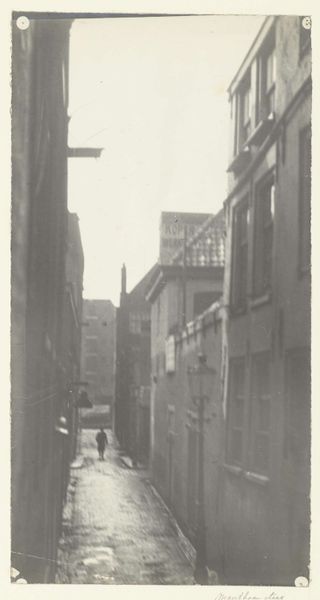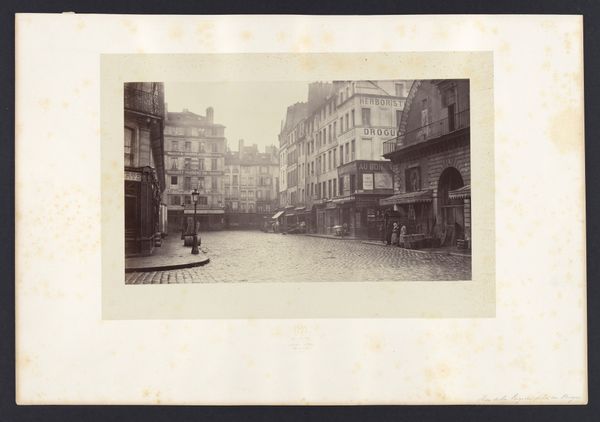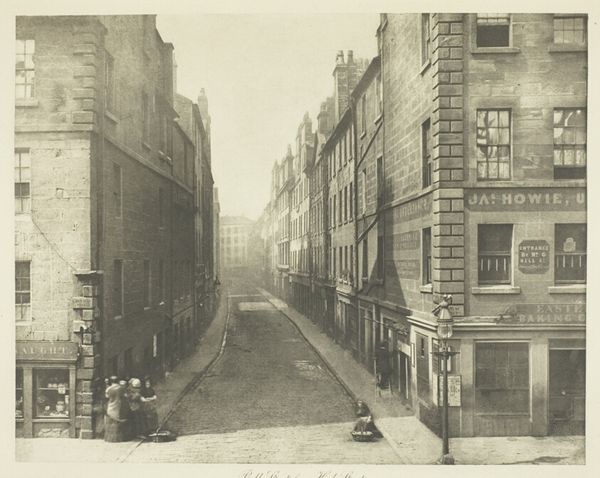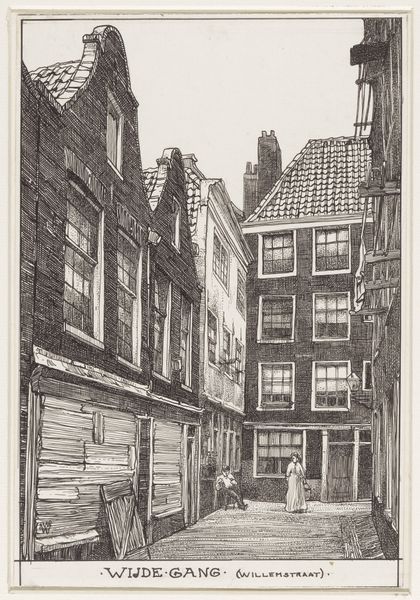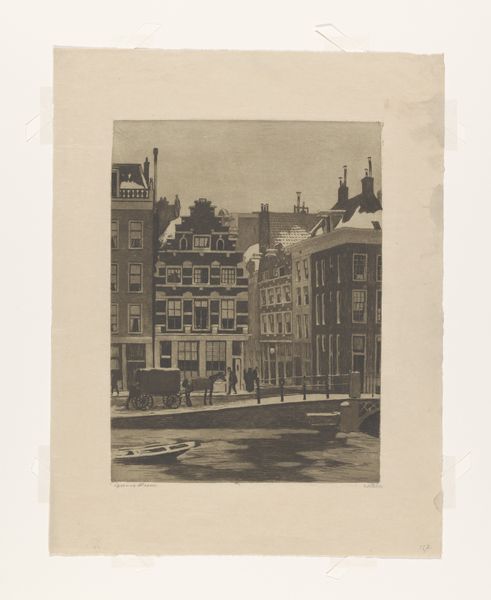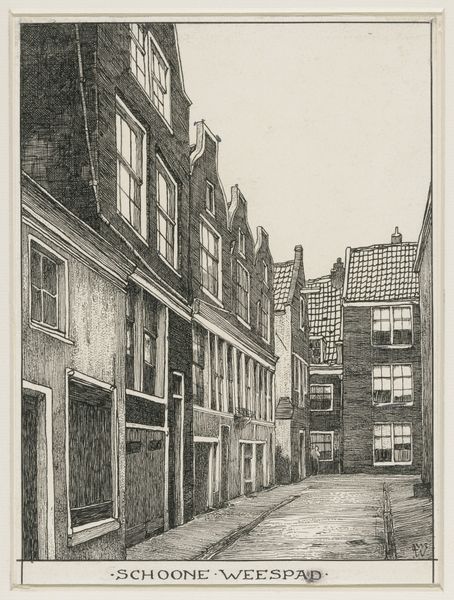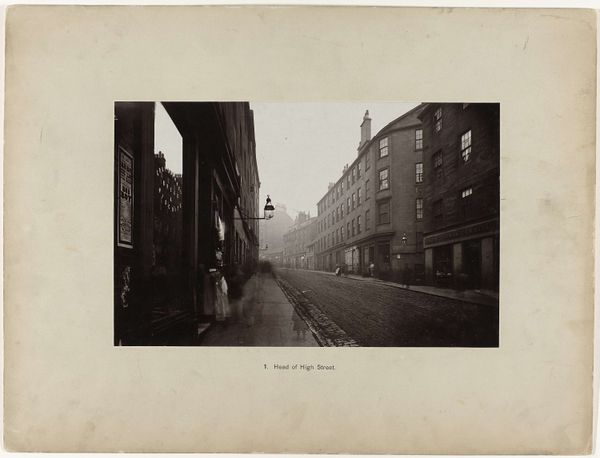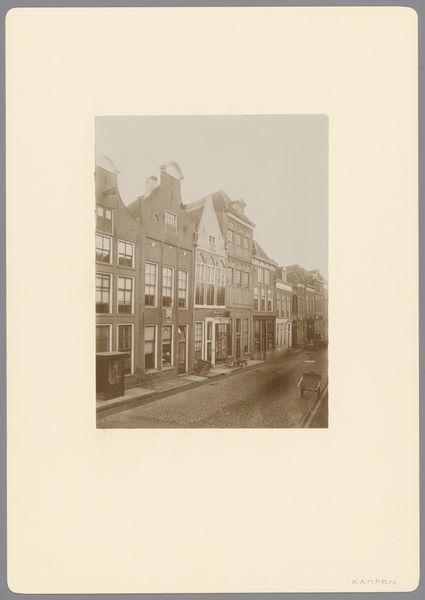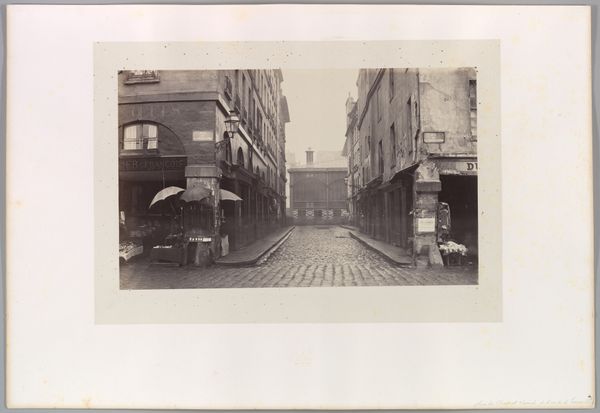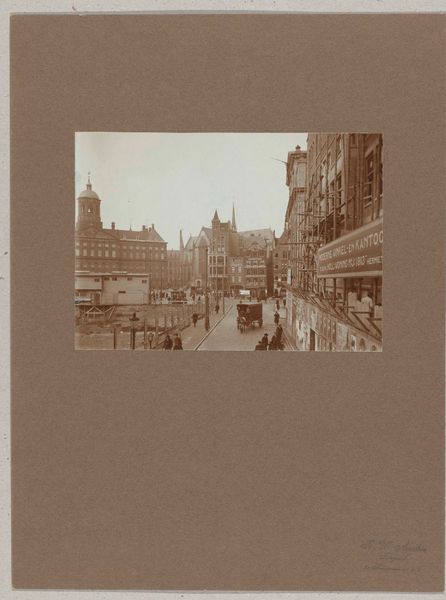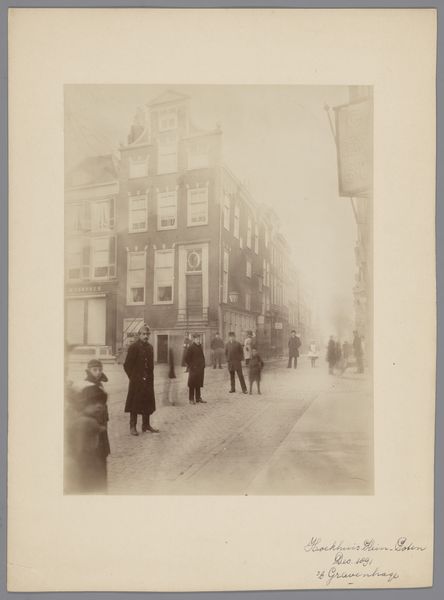
Oudezijds Achterburgwal and Het Kolkje, Amsterdam Possibly 1894 - 1898
0:00
0:00
georgehendrikbreitner
Rijksmuseum
Dimensions: height 267 mm, width 363 mm, height 396 mm, width 446 mm
Copyright: Rijks Museum: Open Domain
Curator: Here we have a captivating cityscape photograph by George Hendrik Breitner, possibly taken between 1894 and 1898. The image depicts Oudezijds Achterburgwal and Het Kolkje in Amsterdam, a bustling urban scene. Editor: Oh, it's gorgeously moody! You can almost smell the damp cobblestones and hear the clip-clop of hooves on the street. I imagine it would have been noisy then, yet there's a stillness in this image, too. The light is almost a character in itself. Curator: Breitner was fascinated by capturing the dynamism of city life. Notice the materials - the photographic process itself, and how that era produced prints with such tonal richness. It reflects a specific moment in the evolution of photographic technology. Furthermore, the social context is quite striking. Editor: It is. The buildings are almost stacked on top of each other, the windows are like so many watchful eyes. There's laundry hanging out to dry, such a familiar intimate glimpse amidst the grey cityscape. It humanizes the image in such a beautiful way, reminding us of the lives lived within those walls. It reminds me of what Virginia Woolf would describe as the poetry of ordinary things. Curator: Indeed. Breitner was part of a movement interested in documenting everyday life, but not in a romanticized or idealized way. It shows a slice of Amsterdam's working-class existence. Also note that while known as a painter, his innovative use of photography offers a raw almost documentary style unseen at the time, which was essential to his later painting style. Editor: Right. His paintings have this wonderful energy as well, he's obviously more inspired by what he's physically experiencing than what he imagines from his painting workshop. Also, look how carefully Breitner's arranged the composition with the subtle vertical rise and the way the canal mirrors it with similar soft lines. The effect is dreamlike, capturing a very unique quality, like walking between the visible and the hidden world. Curator: Very astute. He deliberately obscures certain details with light and shadow to highlight labor and urban development rather than just making it picturesque. Editor: Absolutely. The man on the corner seems deep in thought and one cannot help wonder about their struggles or everyday joy. You start imagining the untold stories held between the gray stones in their worn out jackets. I love when art pulls you in to invent worlds you wouldn't otherwise discover. Curator: This exploration has provided an important view on Breitner’s innovative engagement of photographic tools for socio-historic value. Editor: Yes. A great conversation—it really highlights the photograph’s ability to trigger a cascade of images and feelings for the past, even when viewing them through a modern lens.
Comments
No comments
Be the first to comment and join the conversation on the ultimate creative platform.

